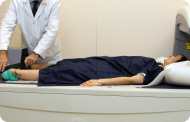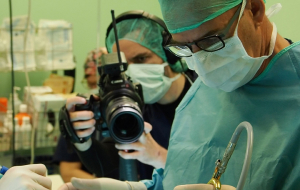
Treatment of pain sensitivity
Pain
Pain is a very important health issue that affects people's quality of life. We understand pain as an unpleasant sensory or emotional, and therefore inherently subjective, experience in response to bodily injury.
What is pain?
Pain is a very important health issue that affects people's quality of life. We understand pain as an unpleasant sensory or emotional, and therefore inherently subjective, experience in response to bodily injury.
Pain is normally classified as acute or, when lasting more than three months, chronic. When pain becomes chronic without resolution, it becomes a disease that must be detected, diagnosed, and treated. Epidemiological studies indicate that one in four people in Spain suffers from chronic pain.
The persistence of pain depends on the characteristics of the disease causing it.
Wear-and-tear processes are normally irreversible, so we cannot control the pain by treating them. However, we can act on the symptoms and therefore the pain they cause (as occurs in osteoarthritis).
Chronic pain brings about a series of changes in the body. Changes are described at cellular biochemical level, hormonal metabolic level, musculoskeletal structural level, peripheral and central nervous system level, and also psychological level.
These maladaptive changes in the body end up producing a variety of concomitant symptoms such as fatigue or extreme tiredness and mood changes in the form of stress, anxiety, and sadness.
In turn, the symptoms lower the pain sensitivity threshold, causing pain to emerge in previously unaffected areas and intensifying existing pain. In other words, chronic pain causes more pain and therefore has a significant impact on the person’s health.
InstituteMYM would like to remind you that today, living without pain is possible.
What causes pain?
As pain has many causes, a pain specialist must take a thorough medical history and collect the most relevant health data through anamnesis and a directed interview.
A complete physical examination is carried out, and, based on the initial diagnostic impression, additional investigations and complementary tests are requested as required in each individual case.
This allows us to achieve an accurate medical differential diagnosis, identify the root cause, and establish a personalised therapeutic strategy.
The most common causes of chronic pain seen in our clinic are musculoskeletal in origin: lumbago or cervical pain due to muscle contracture or disc protrusions, osteoarthritis of the knees or hands, myofascial pain syndrome, widespread muscular pain, and newer central sensitisation syndromes including fibromyalgia and chronic fatigue.
Frequently, these central sensitisation syndromes are accompanied by other chronic illnesses (hypothyroidism, arthritis, stress, anxiety or depression, etc.) which increase pain sensitivity and are often associated with fatigue.
There is also a large group of chronic pain causes originating in the nervous system: headaches, migraines, and neuropathic pain such as trigeminal neuralgia, post-herpetic neuralgia, or complex regional pain syndromes.
Conducting an accurate differential diagnosis of the causes of the pain and the accompanying symptoms is essential to establish a personalised treatment plan and achieve successful management.
What treatments do we have for pain?
Nowadays, we have many personalised treatments to manage pain. An important therapeutic arsenal and more sophisticated techniques allow pain to be reduced and sometimes eliminated, occasionally for limited periods and sometimes for very long durations.
It must be remembered that practically all pain can be improved, at least partially. Initially, we attempt to treat the underlying cause to tackle the root of the pain. However, in some cases, the cause cannot be cured, and so focus shifts to managing the symptoms.
It should also be remembered that stress, fatigue, and pain often go hand in hand, and they must be treated simultaneously from different perspectives to improve overall health.
In order to provide effective pain treatment, we must understand the patient’s biopsychosocial context and design a comprehensive therapeutic plan with a clear multidisciplinary approach.
We primarily work with therapies including physiotherapy, osteopathy, nutrition, psychological support, medication, interventional techniques, and acupuncture.
Acupuncture is a medical procedure that acts at multiple levels and serves as a first-line treatment for all types of pain. Its primary effects are anti-inflammatory, analgesic, antidepressant, and anxiolytic, enabling neuromodulation of pain and related symptoms such as stress and fatigue.
At instituteMYM, we can relieve your pain.


































